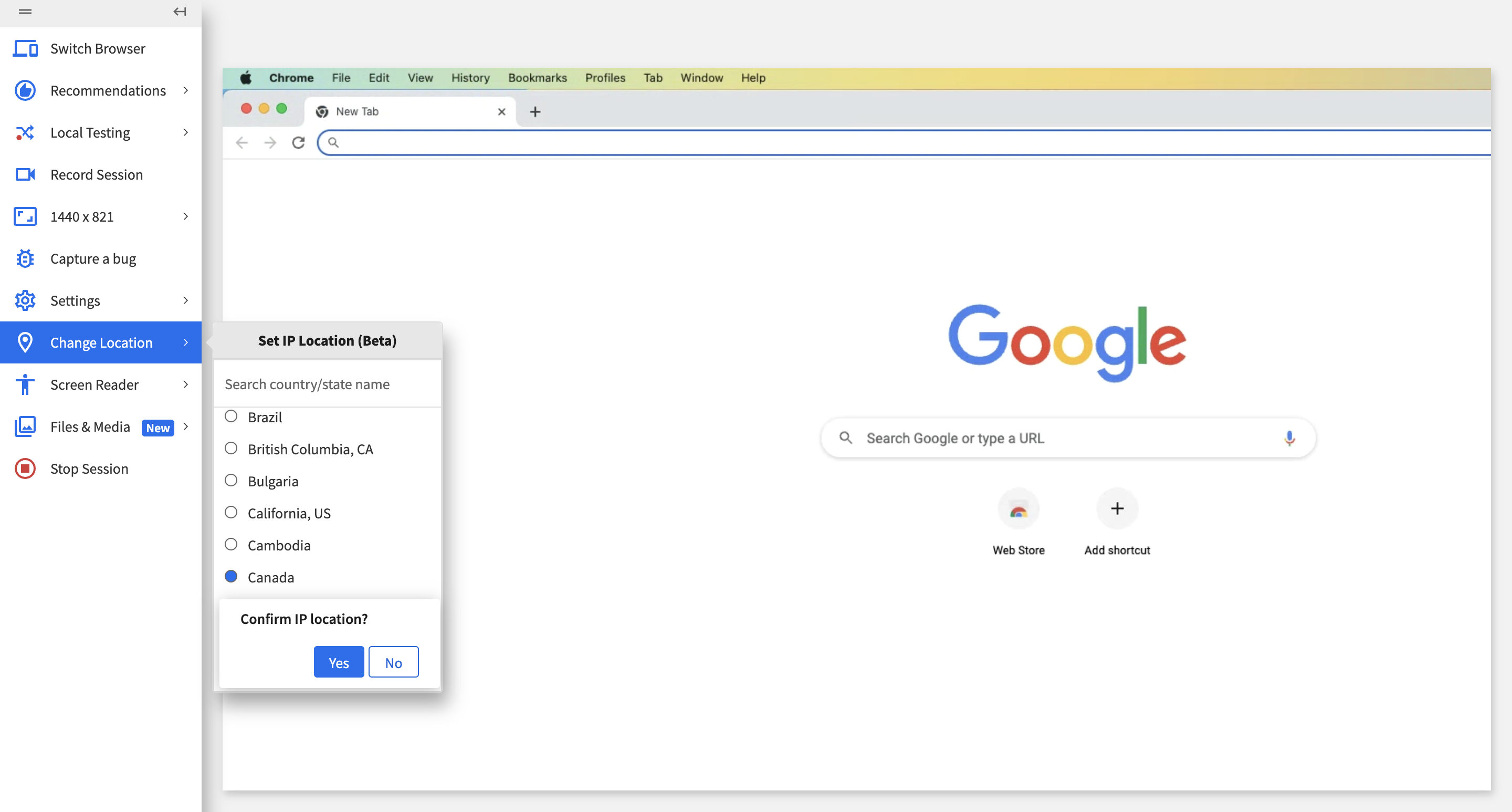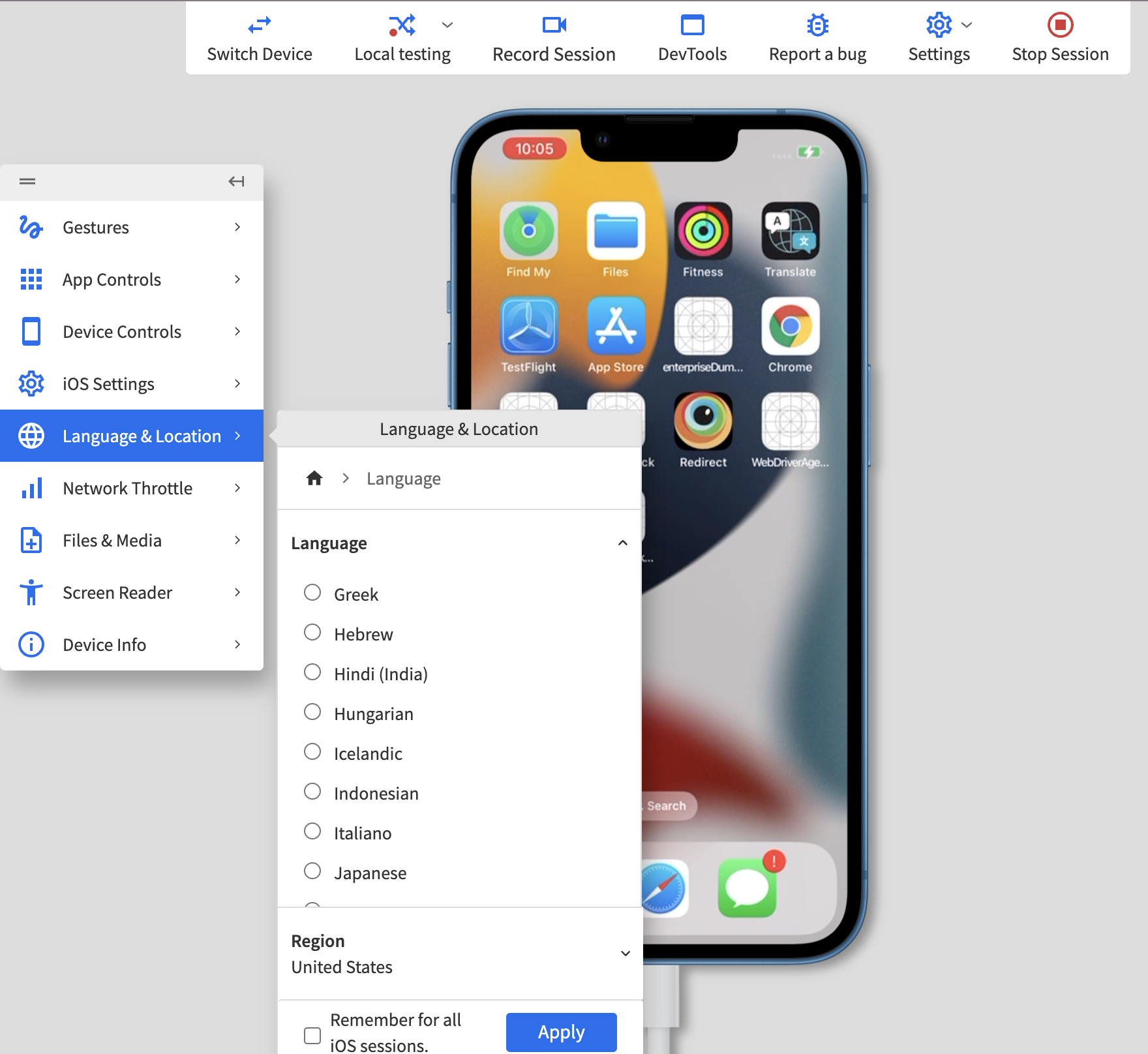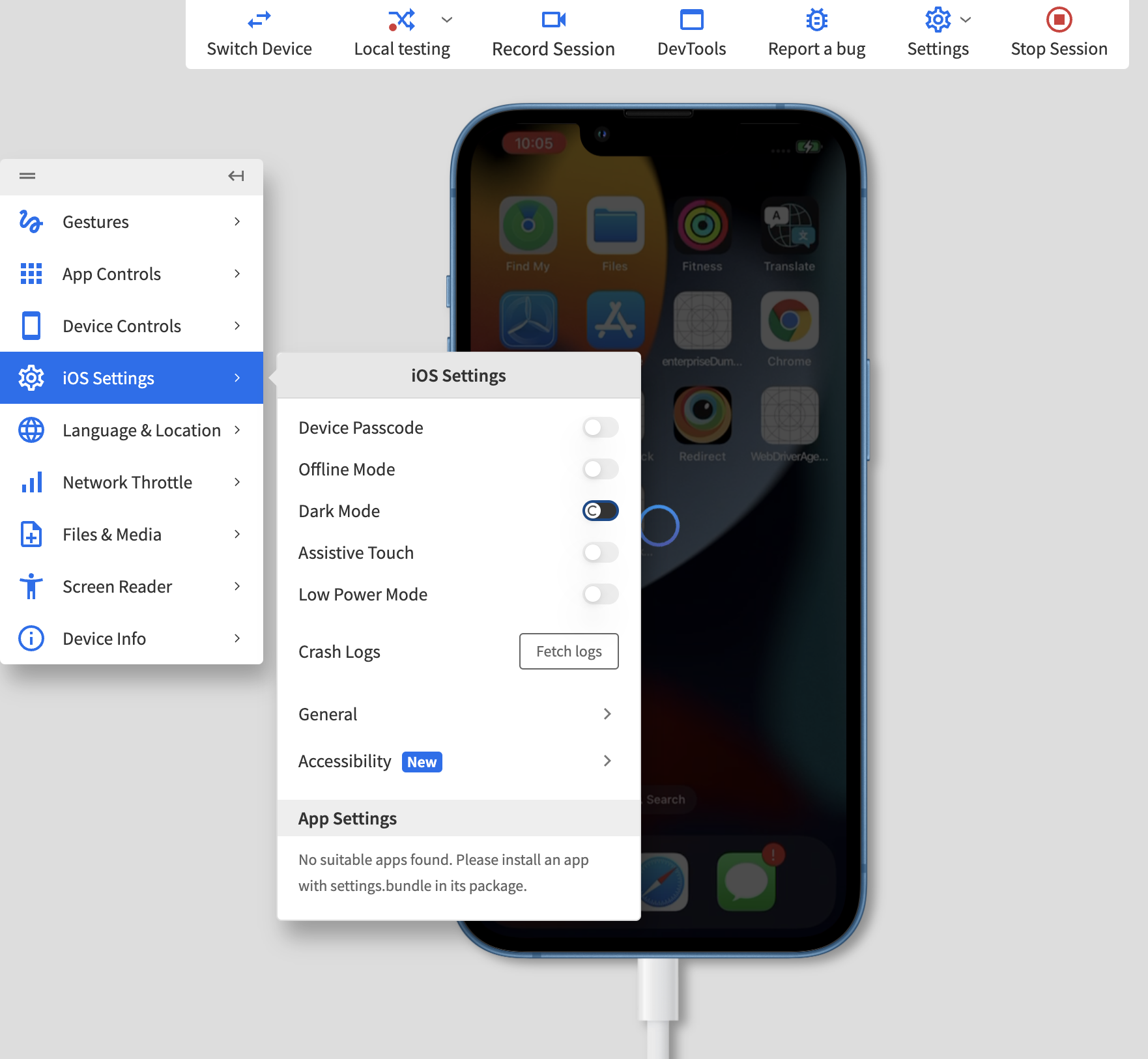Guide to Website Localization in 2023
By Hamid Akhtar, Community Contributor - August 9, 2023
In this detailed website localization tutorial, localized websites emerge as an essential and transformative strategy for navigating the vast digital landscape.
What is Website Localization?
Website localization is the process of adapting a website to suit a specific audience’s preferences and cultural nuances. It involves considering language, script, and cultural values to create a more engaging and tailored online experience. Simply put, these website changes are based on the region from which the person views the website. It needs to resonate with their local and cultural mindset.
Also, from the business perspective, website visitors should be able to access specific payment options, customer support in their local language, and even translation options.
Let’s explore a prime example of highly localized websites:
- McDonald’s: With a consistent design across regions, McDonald’s adapts its menu and messaging options to cater to local tastes.
For instance, the German website is entirely in “Deutsch” while showcasing classic menu items like McFlurry.
While the Japanese website emphasizes an option to offer their Menu in English for non-native residents. This a classic case of a highly localized website strategy and website translation.
For any B2C business listed above, currency changes based on USD, EUR, GBP, and INR based on the location or region are one of the key factors of localized websites.
By effectively adapting brand values, marketing strategies, and website design to target cultures, businesses can engage their audience and foster connections on a global scale.
Top 5 Benefits of Localized Websites
To scale and adapt products effectively, businesses increasingly recognize the value of localized websites.
1. Better Search Engine Optimization (SEO)
- Localization of websites preserves SEO terms, mapping keywords and creating a glossary for accurate translations.
- Boosts website ranking in multiple markets, driving increased traffic while maintaining consistency.
2. Increased Revenue Generation
- Each new market represents a potential revenue stream. Effective website localization enhances product value, making customers more likely to choose your offerings over competitors.
- Operating in new markets becomes more cost-effective, eliminating the need for additional staffing and physical locations.
3. Easier Market Scalability
- A well-defined strategy enables efficient scaling into multiple languages.
- Prioritize regional content to target consumers and conduct research to optimize it.
- Streamlined content localization allows for the economical testing of products across various languages.
4. Enhanced Brand Integrity
- Website localization ensures consistent brand representation across different markets.
- Native market review prevents grammatical and contextual errors, aligning terminology with cultural norms.
- Building consumer loyalty through brand consistency in diverse markets.
5. Maximizing Website Localization
- Investing in a robust framework and localization management platform is essential.
- Choose a suitable website technology for localization, such as static site generators (e.g., Jekyll, Hugo, Eleventy).
- Partnering with a localization service provides the framework and execution for a successful localization plan.
By leveraging the power of website localization, businesses can optimize their online presence, expand their reach, and achieve tremendous success in the global market.
How to conduct Website Localization?
Prerequisites to Website Localization
- Conduct market research: Researching the target market helps gather insights into customer preferences, needs, and demographics, enabling businesses to tailor their localization efforts effectively.
- Identify cultural and linguistic differences: Recognizing cultural nuances and language variations within the target audience ensures that content is appropriately adapted and localized for maximum relevance and engagement.
- Understand user behavior and preferences: By analyzing user behavior patterns, businesses can gain valuable insights into how their target audience interacts with websites, helping them optimize the localized experience and enhance user satisfaction.
Technical Aspects for Website Localization
- Choose a CMS: Selecting a CMS that supports multilingual functionality and facilitates easy content translation and localization streamlines managing and updating localized websites effectively.
- Implement multilingual SEO: Incorporating multilingual search engine optimization techniques ensures that localized websites are optimized for relevant keywords and search queries in different languages, increasing their visibility and driving organic traffic.
- Make it Easy to Switch: Implementing user-friendly language switchers or language selectors on the website allows users to effortlessly switch between different language versions, providing a seamless navigation experience.
Begin Localizing a Website
- Choose the right languages and locales: Select the languages and specific regions to target based on market potential, customer demand, and strategic priorities for successful website localization.
- Adapt Content: Adapting content to align with local cultural norms, customs, and sensitivities ensures that the website resonates with the target audience, establishing a strong connection and fostering trust.
- Hiring the right technical team: Building a competent localization team with expertise in the target market’s language, culture, and industry helps ensure accurate translation, effective localization, and a seamless user experience.
Creating Localized Website content
- Automate the Website Localization Process: Using automation tools and technologies streamlines the localization workflow, allowing for efficient translation, content adaptation, and deployment of localized website versions.
- Use the Correct Translation: A robust translation management system (TMS) enables centralized management of translation resources, glossaries, and workflows, improving quality, consistency, and efficiency.
Testing and Quality Assurance:
- Accuracy Check: Conducting thorough linguistic and cultural checks ensures that the localized website content accurately reflects the intended meaning, adheres to cultural norms and sensitivities, and maintains a high level of language proficiency.
- Testing UX: Performing comprehensive testing of the localized website’s user experience (UX) and functionality ensures that all features, functionalities, and interactions work seamlessly across different languages and locales, providing a consistent and optimal user experience for target audiences.
- BrowserStack Real Device Cloud enables teams to test websites from different countries on real mobile devices (Android and iOS). This includes multiple versions of major browsers (Chrome, Firefox, Safari, Opera, Edge, etc.).
- Using BrowserStack App Live, teams can test 15+ native device features like localization, dark mode, offline mode, low power mode, and more to replicate real user conditions.
- Easily manipulate the Device’s GPS and the IP Location feature to simulate user behavior from different locations by testing with secure, private IPs hosted in 45+ countries worldwide.
- Advanced features include Geolocation Testing, BarCode and QR Code Testing, and the simulation of Slow Network Conditions.
It will also take hawk eyes to confirm that nothing remotely offensive, insensitive, or inappropriate makes it to the production stage. Cultural nuances take time to understand, especially when testers might share the same culture and language.
Run Website Localization Tests
Differences: Globalization, Internationalization, Localization, and Translation
Companies can successfully navigate different markets by understanding and implementing each step effectively.
- Globalization is the process of organizations reaching customers worldwide by integrating country-specific rules and policies with universal standards.
- Internationalization is a preliminary step that involves developing and designing a product that allows for easy localization or adaptation to any market.
- Localization is adapting a product or service for a specific market or locale. It involves project management, testing, and releasing while considering language, culture, colors, symbols, and legal requirements.
- Translation is the transfer of information from a source to a target language. It aims to communicate a text’s meaning effectively in the target locale’s language.
Localization vs. Internationalization: A Comparison
The relationship between localization and internationalization is crucial. While interconnected, they serve distinct purposes.
1. Localization involves adapting a product or service to a specific target audience, considering cultural and linguistic nuances.
- Companies like Airbnb exemplify successful localization strategies.
- Airbnb tailors its platform to various markets by offering localized content, language options, and accommodating local requirements.
2. Internationalization focuses on designing and developing a product to facilitate easy adaptation to different markets.
- Google’s search engine is an excellent example of internationalization, accommodating diverse languages and delivering relevant results to users worldwide.
- Internationalization, exemplified by companies like Google, enables businesses to scale globally by supporting various languages, character sets, and scripts in their software applications and platforms.
- Internationalization serves as a foundation for successful localization.
By examining successful companies like Airbnb, Starbucks, Netflix, and Google, we can appreciate the importance and benefits of effective localization and internationalization strategies for global reach and relevance.
Localization vs Globalization: Conquering the Global Market
While localization is crucial for tailoring products to specific audiences, it alone cannot ensure success. To achieve true international triumph, a comprehensive approach to globalization is necessary.
- Localization involves adapting content, language, and cultural nuances to resonate with local customers. It creates a personalized connection, addressing unique needs and preferences.
- Globalization goes beyond localization and sets the foundation for international influence. It encompasses extensive market research, astute product management, and adherence to global trade policies and laws.
- In essence, localization and globalization work in harmony to drive success in the global arena. Localization caters to specific markets, while globalization provides a strategic framework. By embracing the synergy of these approaches, businesses can unlock their full potential and conquer the global market with resounding success.
Take Starbucks as an impressive example of globalization prowess. With consistent branding, translated menus, and localized pricing, Starbucks has created a unified experience in its coffee shops worldwide.
Localization vs Translation
Localization and translation seem similar, but they serve different purposes in the context of language services. While translation focuses on transferring information from a source to a target language, localization goes beyond translation to adapt content for a specific target audience.
- Translation primarily deals with the linguistic aspects of converting written or spoken text from one language to another while ensuring accurate meaning and effective communication. It is commonly applied to documents, books, and various textual materials.
- Localization, on the other hand, involves a broader process of adaptation. It considers language, cultural, and regional elements to make content resonate with the target audience. This includes local colors, symbols, imagery, currency, number systems, and social conventions.
A notable example is Johnnie Walker, the whisky brand, which localized its slogan “Keep walking” for different markets. In German, it was transformed to “Der Tag Geht, Johnnie Walker kommt,” meaning “The day goes by, Johnnie Walker comes.” This adaptation aligns with the cultural context and resonates more effectively with the German audience.
Closing Notes
Through meticulous attention to linguistic and cultural accuracy, rigorous testing of user experience and functionality, and a commitment to excellence, businesses can confidently launch and maintain localized websites that leave a lasting impact on global markets.
By embracing the power of localized websites, businesses unlock the potential for global expansion, meaningful connections, and sustained success in an increasingly interconnected world.








